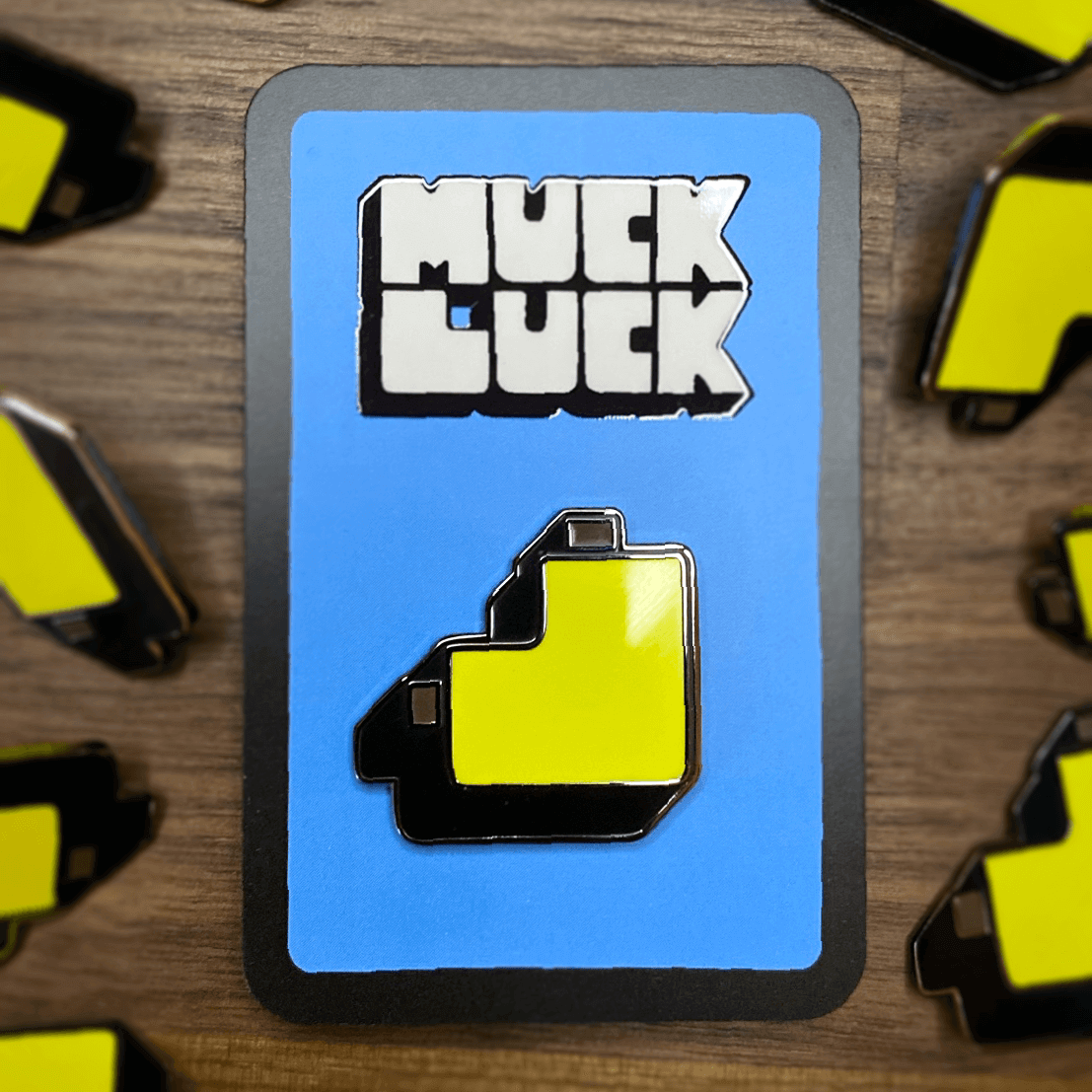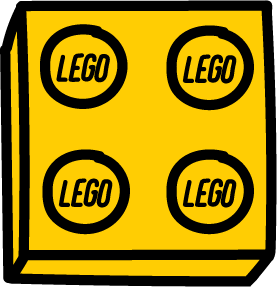How I made my first ever merch
I did it. I finally made some merch. It seems like an obligatory stage in a YouTuber’s journey - heading to spreadshirt.com, sticking your logo on a t-shirt and Bob’s your uncle, sorted.
Except for me that wasn’t the case.
I always thought simply sticking your name or logo on a cheap t-shirt was a bit naff. Combined with the fact that personally I dislike t-shirts with big, gaudy graphics plastered over them, it didn’t seem like a very enticing prospect. So for the time being, I’ve ignored any idea of making merchandise - and since my channel isn’t humongous anyway, it’s never been a big deal.
Until now! Well, my channel still isn’t humongous but I guess being stuck indoors for the most part these past eight months gave me time to ponder and plan. The idea to make an enamel pin was actually planted in my mind way back in August 2019 (2019 feeling like a lifetime ago by this point). Thanks to some accurately targeted online adverts, I’d recently learned about a website called Wish.com where you could order all sorts of tat directly from China for pittance. Sure it’d take six weeks to arrive but the stuff only cost £1, including some funky looking Simpsons pins! I bought a few, curious to see what the quality was like.
Fast forward six weeks and I did my first ever unboxing…unpacking? Whatever it was, I was impressed with the pins. There’s something very satisfying about an enamel pin, I’m not sure how to describe it. And don’t get me wrong, I’m not one of those people with pins plastered all over their denim jacket or rucksack - in the words of Marge Simpson:
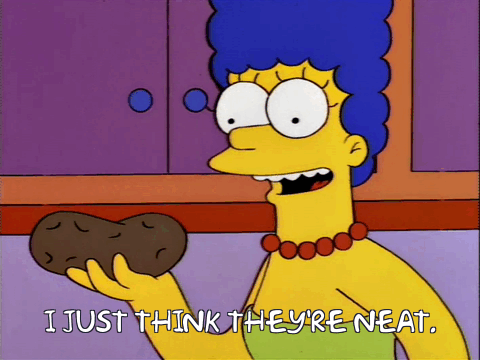
And that got me thinking - wouldn’t it be cool to have my own enamel pins? I work alongside some graphic designers and I’m always jealous when they get to see their own designs in physical form, be it a leaflet or a banner. My semi-recent rebrand was ripe to use, especially since my banana logo was a nice, simple design and the perfect fit for a pin.
Made in China
Time to research how on earth I was going to create some enamel pins without spending a fortune. In my head it was an industry where you’d have to order thousands at a time in big bulk orders by huge companies. Turns out there’s a thriving market for indie pin makers who are creating smaller batches to sell on their online shops - just take a look at the vast array of edgy, inspirational or just plain weird offerings on the #enamelpin Instagram feed.
Now knowing it was in fact a feasible idea, I did what any other person would do and just googled it. “Custom enamel pins” brought up a ton of companies offering just what I needed…custom enamel pins, duh. With quantities as small as fifty, websites like The Enamel Pin Factory and Made By Cooper also featured easy-to-use ‘builder’ pages where I could get instant quotes.
That was the good news, the bad news was the price - it wasn’t cheap. I soon discovered there wasn’t much difference in price between making 50 and making, say, 200. That’s because a large chunk of the costs involved is creating the mould, and that needs to happen regardless of how many you end up making.
I’m sure you’re all aware of this anyway but I should stress that I didn’t create these pins to make a profit. I ended up ordering 100 but there’s no chance I’ll sell all of those, most of them will end up sitting in my cupboard collecting dust no doubt. Does that bother me? Not at all! I did this as a fun little project to pass the time during imposed lockdowns. If anyone just so happens to actually want one of these and buys one - that’s icing on the cake. And besides, I’ve been fortunate enough to get a fair few Adsense payments over the years from adverts on my YouTube channel, certainly enough to cover doing this.
Anyway, back to the research. Those previously mentioned websites were quoting around £200 for 50-100 pins and that was just a tad too much for me to commit to. I didn’t really know how much to expect but since I was doing this for a bit of fun, I had to find a cheaper alternative.
More googling later and I came across some guides from pin sellers on how they go about the manufacturing of their designs. Pages like this from Pin Lord or this from Luna Chai were incredibly insightful and ended up pointing me in the right direction for cheaper pins - China! I’m sure those previously mentioned websites are perfectly fine but when it comes down to it, they’re pretty much just a middleman to the real pin manufacturers in China. They take your ideas and designs, give a little advice here or there, tweak it a bit or two and then hand it over to a well established factory overseas. They simplify the whole process for the customer and in return, they can charge a bit more to take a cut.
What I learned is that if you don’t mind doing a bit more work, cutting out the middleman and talking directly to the manufacturers can save you a fair amount. And the best way to do that? With a little website known as Alibaba.com…
Alibaba and the Forty Different Options to Choose From
Ok I lied, Alibaba isn’t a little website - it’s a monstrous, complex, overwhelming world of numbers, figures, taxes, business slang and abbreviations. OEM. MOQ. RFQ. What was I getting myself into? I’m no businessman, I hated studying maths and unfortunately I can’t speak Chinese. Alibaba is an online marketplace allowing consumers to order directly from literally thousands of suppliers. It’s a bit like eBay or Amazon, just a whole lot more complex. I mean, c’mon, just take a look at their UI…

I trepidatiously clicked my way around the website, signing up and creating a ‘business’ to order with. Searching for enamel pins brought up a slew of results, list after list of suppliers with profile pages covered in buzzwords. Eventually I started to understand some of the lingo and found manufacturers with a minimum order quantity (MOQ, aha!) of 50-100. Thanks to a template from the Pin Lord guide, I was able to copy and paste a message to around ten or so to see which offered the cheapest quote.
In it I asked for a quote based on how much 50/100 hard enamel pins* 30mm big with three colours would cost, including shipping to merry ol’ England. Little did I know that was to open the flood gates with a torrent of messages and sales pitches from these businesses. Y’see Alibaba has an inbuilt chat system, pretty much akin to Facebook messenger where you’re able to converse with the employees. And just like any good sales pitch, if I didn’t respond in a timely manner, they were quick to press me on whether I wanted to continue or not.
*There are two types of pins, hard enamel vs. soft enamel. Simply put, hard enamel costs more but is higher quality and more durable. It’s flat compared to soft enamel where the enamel ‘sits’ in the mould more rather than being flush with it. There’s also specific colour codes to consider and pin placement etc. This is what I ended up with when it came to the pin blueprint:
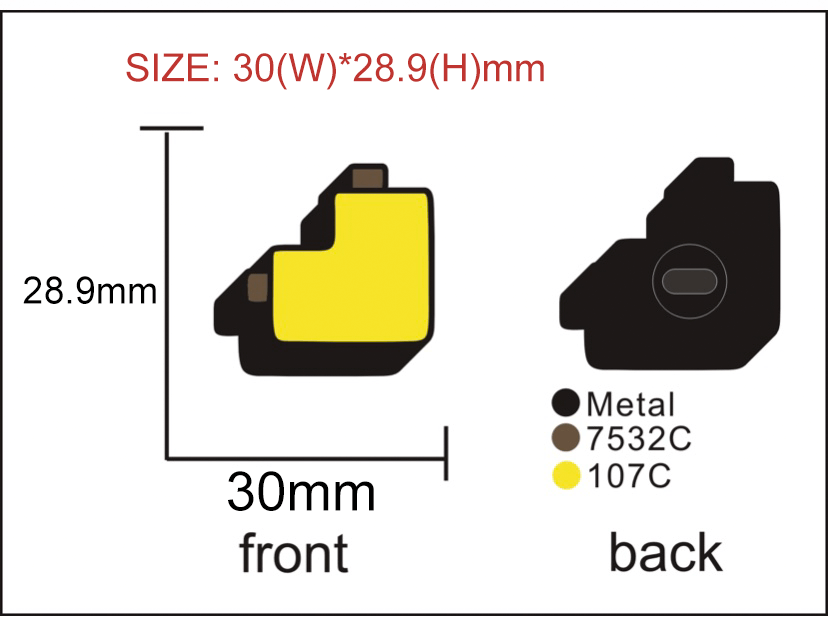
My phone soon filled up with notifications from the Alibaba app - messages from someone called Crystal, another from Wendy or Eva or Jayce. Throughout the night they’d check in with me to see if they could progress with the order. Other times the messages had nothing to do with enamel pins and instead asked for my opinion on Boris Johnson or Covid-19 which was…odd to say the least. What I will say is that, whilst not perfect, the majority of suppliers I spoke to communicated in perfectly legible English so don’t let that aspect put you off using Alibaba. It’s terrifying in many other ways, but chatting to the manufacturers was actually quite nice.
I was receiving quotes of various amounts from Alibaba, some low but some actually higher than using the middleman websites. Of the ones that were low, some were just…too low. You know that saying? “If it seems too good to be true, it probably is.” Well, one supplier in particular was quoting a meagre £65 in total. If it’s that cheap, surely the quality can’t be any good? Their photos look nice but who knows how mine would actually turn out. Moreover, their contact Wendy was spamming me with messages, eager to seal the deal and get on with the order.
Alarm bells rang in my head.
Alibaba lets you check the transaction history of suppliers and theirs…wasn’t great. Either they were relatively new or people simply didn’t use them. Sorry Wendy, but things aren’t working out.
Looking back at Luna Chai’s guide, they’d mention some ‘notable Alibaba producers’ which I really should’ve paid attention to initially. I tried contacting one of them called Kunshan Krell Cultural Developments Co. and ended up speaking to Vicky. Vicky was different. Vicky didn’t mess around. No pleasantries, no small talk - straight to the point with quick, blunt answers to my naive questions. She didn’t hound me or pester me, instead offering 100 pins for around £90. Deal! I’ll admit, sending across that much money on a site I’d never used before to a company on the other side of the planet was a bit nerve-racking but thankfully Alibaba does include some sort of buyer protection/trade assurance type stuff so I wasn’t too worried. Any fears soon dissolved when I received a DHL tracking code not long afterwards, with the package delivered three weeks later all the way from Jiangsu, China. My banana logo had travelled the world!
I’d read about how to expect not all the pins to come out perfectly. For professional pin sellers, these slightly imperfect pins become b-stock to sell at a cheaper rate. Thankfully I’d say pretty much all of mine look great - perhaps due to the quality of the manufacturer or more likely because the design is so simple there’s less to go wrong. Opening the (unfortunately bomb-like) package and seeing my own design as a tangible, physical item was brilliant. The process was worth it for that feeling alone.
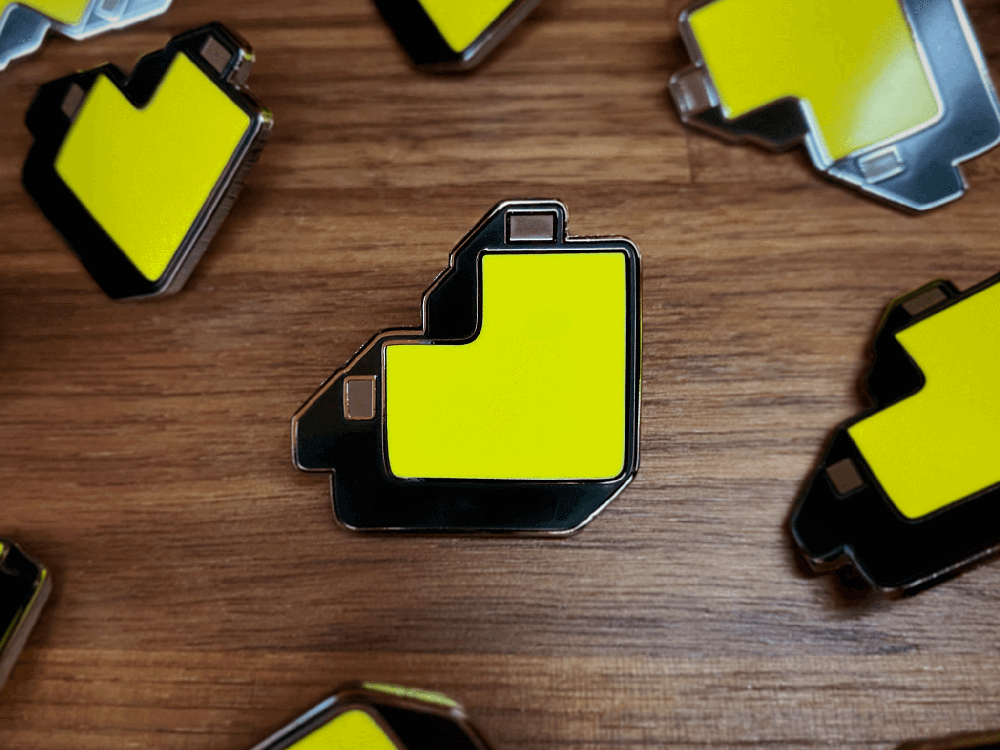
“Look at that subtle colouring. The tasteful thickness.”
I had my pins but that was all. In all the pretty Instagram photos, pins were on a backing card that complimented the design and rounded off the whole thing. Backing cards were an option with the manufacturers on Alibaba but I decided early on that I’d make the backing cards separately. How, you may ask? Business cards!
There are tons of business card printing services online, offering all sorts of finishes, thicknesses and embellishments. They’d serve as the perfect size for a backing card and generally they’re pretty cheap to order. I opted for a site called Vistaprint which offered rounded corners to match my video thumbnail design. Better yet, since there was a 30% discount going at the time, I decided to add a bit of flare with a spot uv finish on my logo. The only thing I had to be careful with was converting rgb colours to a cmyk equivalent as best I could, but overall they came out looking great.
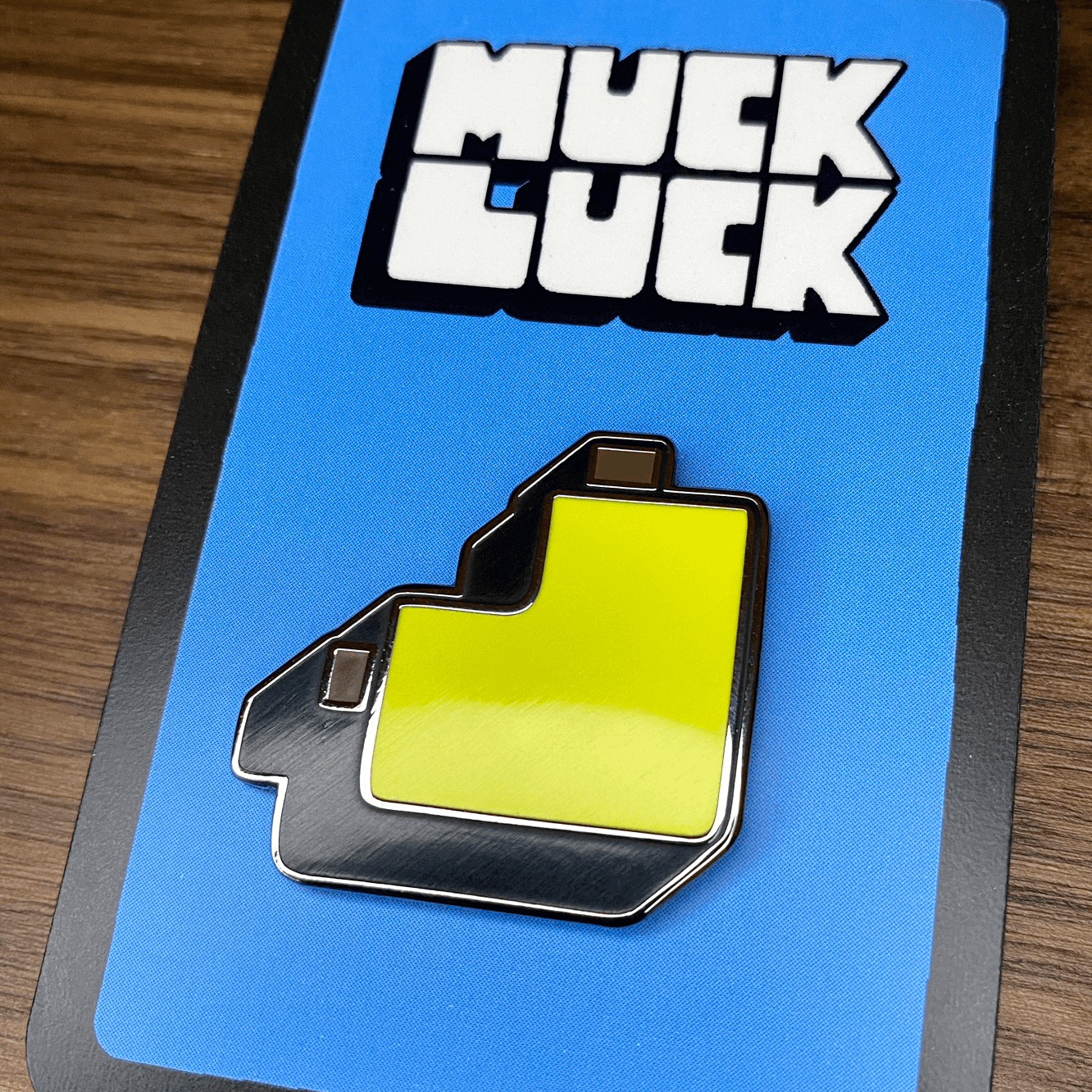
After purchasing a bit of packaging from Amazon, they’re ready to go! Oh right, I should probably link to where you can buy them…
https://ko-fi.com/s/720a34d810
They’re listed on my newly created Ko-fi shop page. If you weren’t aware, I previously had a Patreon page set up but never really used it as intended. To cut a long story short, I decided to close that and simplify things with a Ko-fi page instead. Instead of a month-to-month donation, Ko-fi let’s you give one-off donations if you ever fancied supporting me and paying for, well, a coffee.
Despite the fact that my largest audience is US-based, I’m starting off with UK shipments only. There’s no big business behind all this automatically packing it, buying the postage and sending it off - it’s literally just me doing this after I’ve finished my regular job. Not to mention that international delivery comes with its own issues of customs and whatnot. Sorry to anyone overseas who wants one - I’ll look into it further down the line I promise!
Oh would you look at that, I rambled on for far too long again. At the very least I hope this has proved insightful, especially if you’re considering making your own enamel pins. I say go for it - it’s scary at first but boy, is it worth it in the end.
